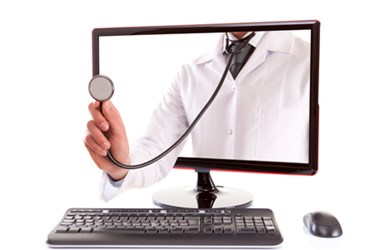CMS Pays Out Nearly $14 Million In Telemedicine Reimbursement

By Christine Kern, contributing writer

As payer coverage for telemedicine expands, telehealth gains ground in healthcare.
Total reimbursements for telemedicine by the Centers for Medicare & Medicaid Services reached $13.9 million in 2014 according to CMS data, indicating telehealth is gaining ground in healthcare. Of that amount, approximately $12.48 million was for provider fees (in the location of telemedicine provider) and $1.45 million for originating sites fees (patient location).
Since 2001, Medicare has reimbursed more than $57.6 million for telemedicine coverage, falling far short of the 2001 Congressional Budget Office's estimate of $150 million for the first five years. However, as more states introduce bills establishing or expanding payer coverage for telemedicine, the practice is gaining ground. Currently, 43 states and the District of Columbia provide some form of Medicaid reimbursement for these services. And consumers are interested – according to a recent Harris Poll survey, 27 percent of healthcare consumers would choose telehealth if were an available option.
Health IT Outcomes reports that, despite the regulatory and reimbursement hurdles, a 2014 Telemedicine Survey conducted by Foley & Lardner LLP demonstrated healthcare executives are moving forward with implementation of telemedicine. “Healthcare leaders tell us that their organizations are committed to continuing to implement telemedicine programs, even as they face challenges such as getting doctors to buy into the programs and insurers to pay for them,” write the report’s authors.
And as Health IT Outcomes further notes, a Tractica report estimates more than 78 million consumers will utilize some form of home health technologies by 2020 with the growth driven by expanded capabilities for medical monitoring, telehealth options, Eldercare, and health and wellness applications. According to a press release, medical monitoring, diagnosis, and treatment will be the largest application market over the next few years with the projected growth of a wide variety of connected health devices and software apps.
An earlier iData Research study estimated telehealth technology will experience double-digit growth through 2020 in the United States, driven by the demand for customized healthcare solutions, increased chronic illness among the aging population, and strained healthcare budgets. The U.S. patient monitoring market is projected to expand to over $5 billion by 2020.
Although Texas may be tightening the reins on telemedicine, other regions are recognizing the value and importance in providing healthcare to underserved populations because of its low costs and ability to reach otherwise inaccessible patients, as Health IT Outcomes reported. While legislation supporting it has been slow to develop, New York Governor Andrew Cuomo signed a telehealth bill designed to help service the populations that would benefit most and also require Medicaid to reimburse the service costs.
